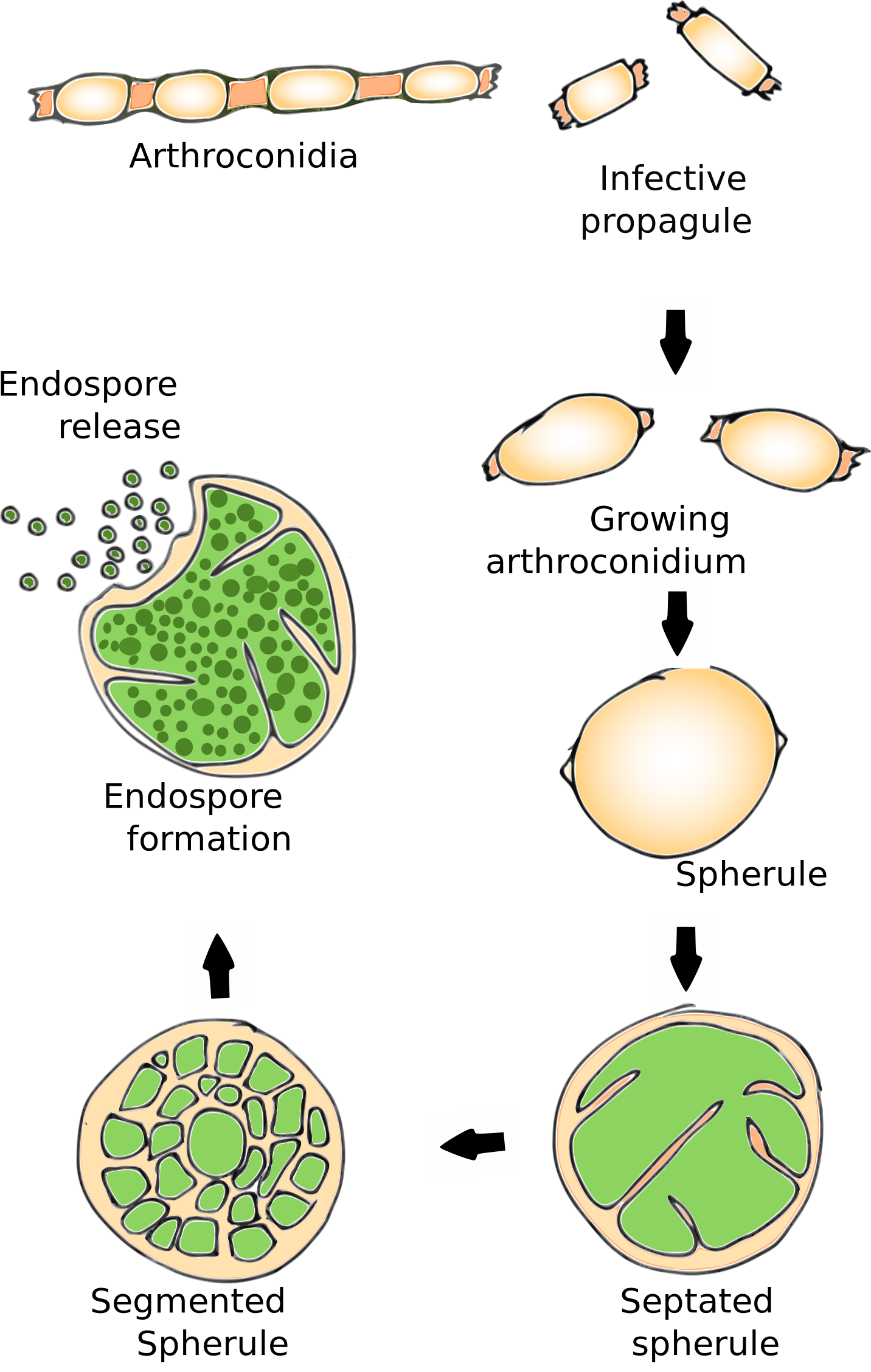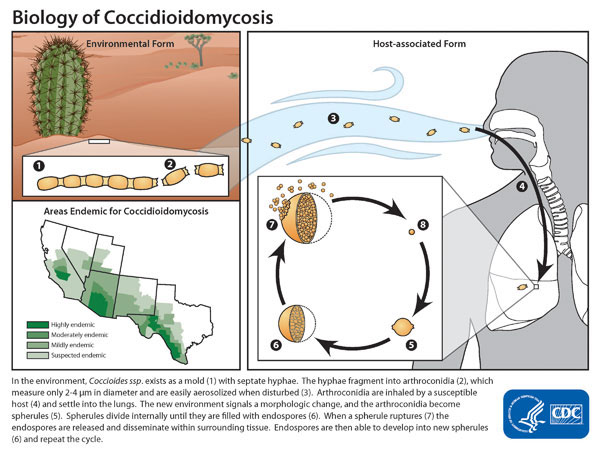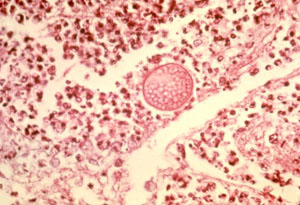Coccidioidomycosis pathophysiology
|
Coccidioidomycosis Microchapters |
|
Diagnosis |
|---|
|
Treatment |
|
Case Studies |
|
Coccidioidomycosis pathophysiology On the Web |
|
American Roentgen Ray Society Images of Coccidioidomycosis pathophysiology |
|
Risk calculators and risk factors for Coccidioidomycosis pathophysiology |
Editor-In-Chief: C. Michael Gibson, M.S., M.D. [1]; Associate Editor(s)-in-Chief: ; Vidit Bhargava, M.B.B.S [2]; Aditya Ganti M.B.B.S. [3]
Overview
Coccidioidomycosis is a fungal infection, that is acquired through inhalation of the spores that is present in the environment. Following transmission, coccidioidomycosis are deposited into terminal bronchioles and enlarge, become rounded and develop internal septations to form what are known as the spherules. It then disseminates to the lymphatics and blood stream to gain access to any organ of the body.
Pathogenesis
The pathogenesis of coccidioidomycosis can be described in following steps.[1][2][3][4]
Transmission
- Coccidioiodomycosis exist as mycelia in the soil with septations.
- During hot climate or dry environment, they proliferate asexually, transforming into spores, known as arthroconidia.
- Infection is caused by inhalation of these arthroconidia.
- The disease is not transmitted from person to person.
Incubation period
- Incubation period of coccidioidomycosis varies from one to three weeks.
Dissemination
- Following inhalation, arthroconidia reach terminal bronchioles.
- Then they are ingested by pulmonary macrophages.
- Inside macrophages these arthroconidia enlarge, become rounded and develop internal septations to form what are known as the spherules.
- It then disseminates to the lymphatics and blood stream to gain access to any organ of the body.
Seeding
- Spherules contain uni-nuclear cells called as endospores which may propagate the infection further as they have the capability to develop into spherules.
- This conversion of anthroconidia into spherules initiates an inflammatory reaction and leads to a chemotaxic response (peptides derived from activation of the complement pathway, leukotrienes ) which attracts neutrophils and eosinophils to the site of inflammation.
- Cell mediated immunity keeps the infection in check and keeps them limited to the organ of origin by forming granulomas.
Immune response
Coccidioidomycosis elicits cell-mediated immune responses.
- Delayed type hypersensitivity to coccidioidal antigens is common after acute infection has resolved.
- Dissemination usually occurs via the lymphatics and is more common in immune suppressed in whom the primary infection is not contained.

Genetics
There is no known genetic association to coccidioidomycosis.
Microscopic pathology
It is a dimorphic fungi and exists as
- Spherule with endospores
- Rarely as hyphae
Microscopic Pathology
{{#ev:youtube|RtpvzCfFwfg}}
References
- ↑ Stockamp NW, Thompson GR (2016). "Coccidioidomycosis". Infect. Dis. Clin. North Am. 30 (1): 229–46. doi:10.1016/j.idc.2015.10.008. PMID 26739609.
- ↑ Twarog M, Thompson GR (2015). "Coccidioidomycosis: Recent Updates". Semin Respir Crit Care Med. 36 (5): 746–55. doi:10.1055/s-0035-1562900. PMID 26398540.
- ↑ DiCaudo DJ (2014). "Coccidioidomycosis". Semin Cutan Med Surg. 33 (3): 140–5. PMID 25577855.
- ↑ Malo J, Luraschi-Monjagatta C, Wolk DM, Thompson R, Hage CA, Knox KS (2014). "Update on the diagnosis of pulmonary coccidioidomycosis". Ann Am Thorac Soc. 11 (2): 243–53. doi:10.1513/AnnalsATS.201308-286FR. PMID 24575994.

